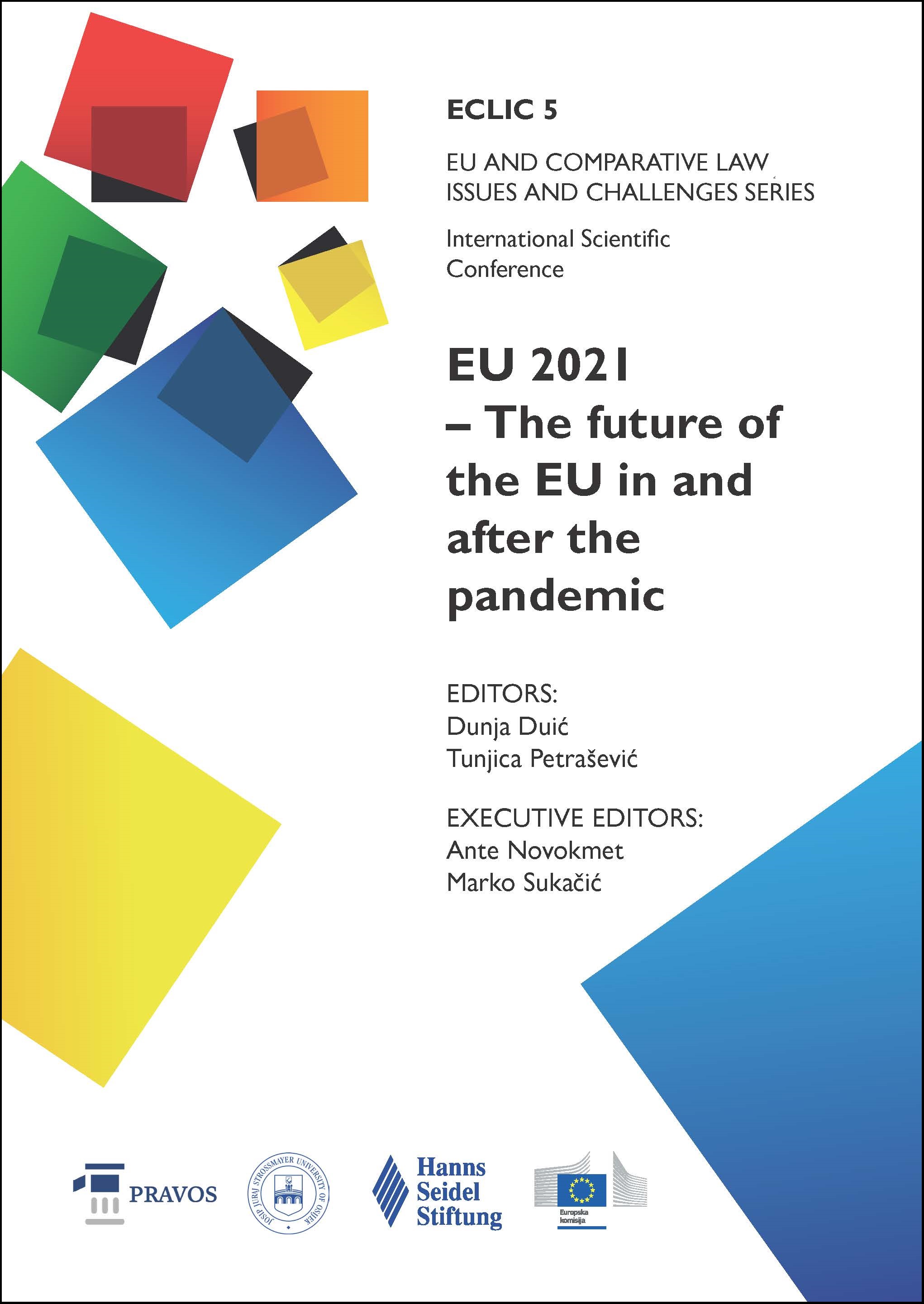REGULATORY SYSTEMS OF SELECTED EUROPEAN UNION MEMBER STATES IN COVID-19 PANDEMIC MANAGEMENT AND LESSONS FOR THE FUTURE
DOI:
https://doi.org/10.25234/eclic/18360Abstract
The European Union (EU) actively responded to the pandemic and the consequences of the pandemic in different areas of human activity (health, economic, social, etc.) adopting a series of regulations, measures and guidelines in different fields. EU member states acted in accordance with EU regulations and within their own legal system and the management structures. The aim of this paper was to analyze ten selected EU member states and their regulatory responses in the approach to pandemic control in relation to the mortality rate per million inhabitants on January 15, 2021. The following hypothesis was set: The regulatory systems and management structures of selected EU member states in the framework of the management of the COVID-19 pandemic have been successfully set up and implemented and have contributed to the lower mortality rate per million inhabitants until January 15, 2021. Ten EU countries were selected for the study according to their mortality rate per million inhabitants on January 15, 2021. Besides Croatia (average mortality), research included three member states with high (Belgium, Slovenia, Czechia), three with average (Hungary, Austria, Slovakia) and three with low mortality rate per million inhabitants (Ireland, Denmark, Finland). All available data from EU and ten selected countries were collected and analysed: about legal framework for crisis management, regulatory powers, level of decentralization in the health care system and whether the timeline of the pandemic control criteria according to the Institute for Health Metrics and Evaluation (IHME) was adequately set. Data were analysed in Microsoft Office Excel. Given the obtained results, hypothesis can be considered only partially proven. The legal framework used by studied EU countries for adopting pandemic control measures was not consistently associated with morality rate in this research. All studied EU countries used legal framework that existed prior to the COVID-19 pandemic, four of them had states of emergency provided in the Constitution (Czechia, Hungary, Slovakia and Finland), four of them effectively declared statutory regimes (Slovenia, Hungary, Croatia, Slovakia), and Belgium adopted pandemic control measures using special legislative powers. Three studied countries (Austria, Denmark, Finland) had high level of decentralised decision making in health sector and lower COVID-19 mortality rate. In the first pandemic wave (start in March, 2020) all studied countries respected the timeline in adopting pandemic control measures according to the IHME criteria. In the second pandemic wave (start in October, 2020) only four countries (Czechia, Ireland, Denmark, Finland) respected the timeline in adopting pandemic control measures and three (Ireland, Denmark, Finland) were in low mortality group. Within the concluding considerations of the studied countries and in their pandemic management models, Finland and Denmark were recognised as the most successful with lowest COVID-19 mortality rates. Long tradition of Public Health, decentralized health care decision-making, high level of preparedness in crisis management and adequate timeline in implementation of the pandemic control measures led to lower mortality in COVID-19 pandemic. In the future EU could take even more active role within its legal powers and propose scientific based approach in crisis management to help countries implement measures to preserve lives of EU citizens.
Downloads
Published
How to Cite
Issue
Section
License
Copyright (c) 2021 Marijeta Vitez Pandžić, Jasmina Kovačević

This work is licensed under a Creative Commons Attribution-NonCommercial 4.0 International License.
Authors retain the copyright on the papers published in the Journal, but grant the right of first publication to the Journal. Papers accepted for publication or already published in ECLIC of the Faculty of Law in Osijek may be published by the author(s) in other publications only with proper notice of its previous publication in ECLIC.


